Enjoy this twist on a traditional labneh dip enhanced with zingy garlic, aromatic Za’atar, buttery pine nuts and fresh herbs. Perfect for spreading, dipping, or pairing with your favourite Middle Eastern dishes!
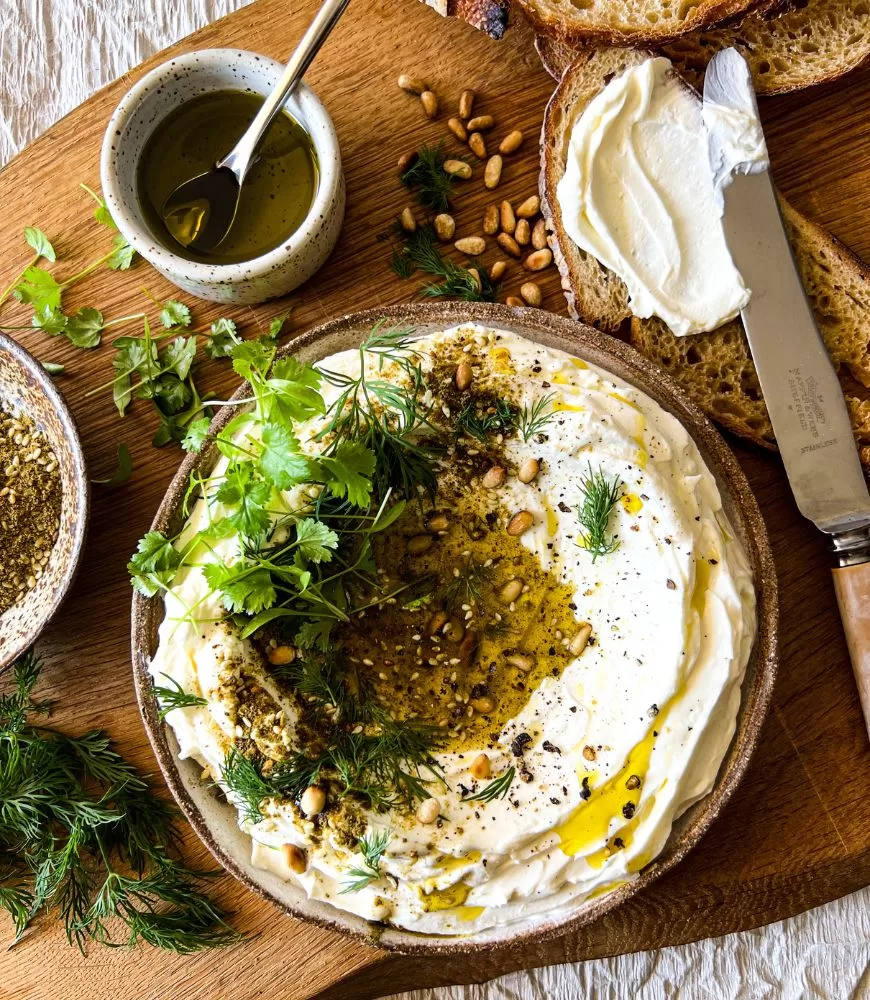
What is Labneh?
Labneh is a thick, creamy, and tangy Middle Eastern strained yogurt cheese. It is made by straining yogurt to remove excess whey, resulting in a rich and spreadable consistency similar to cream cheese. Labneh is versatile and can be enjoyed as a dip, spread, or ingredient in various dishes.
Labneh is usually served one of two ways. It can either be served as a spreadable dip, like I have here, or you can allow it to strain for longer (anywhere up to 3 days) to remove more of the whey and become quite firm. You then roll into small walnut size balls. The balls can then be served as it or stored in the fridge, covered in olive oil (and infused with herbs and spices if desired) and served as part of a mezze plate, side dish or with bread and crackers.
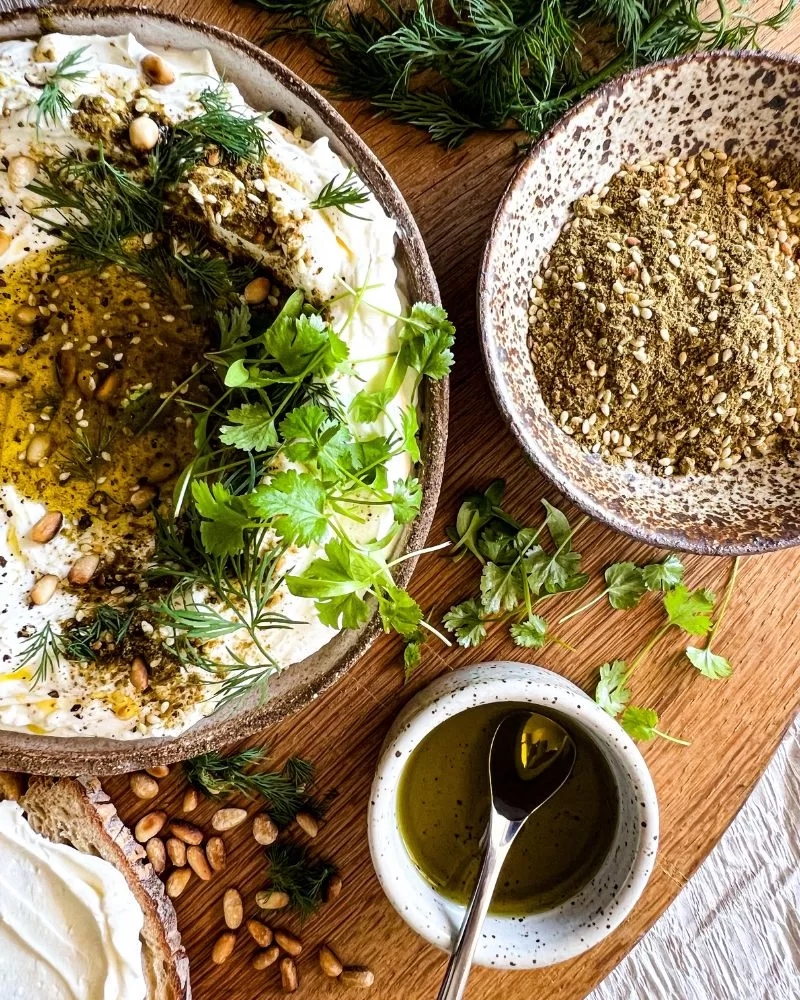

Step-by-step how to make labneh
Labneh is very simple and easy to make but you do need to plan ahead to give the yoghurt time to drain away excess whey. The salt added to a labneh helps speed up this process by drawing the moisture out.
NOTE WELL: Make sure to use Full Fat thick Greek-style natural yoghurt!
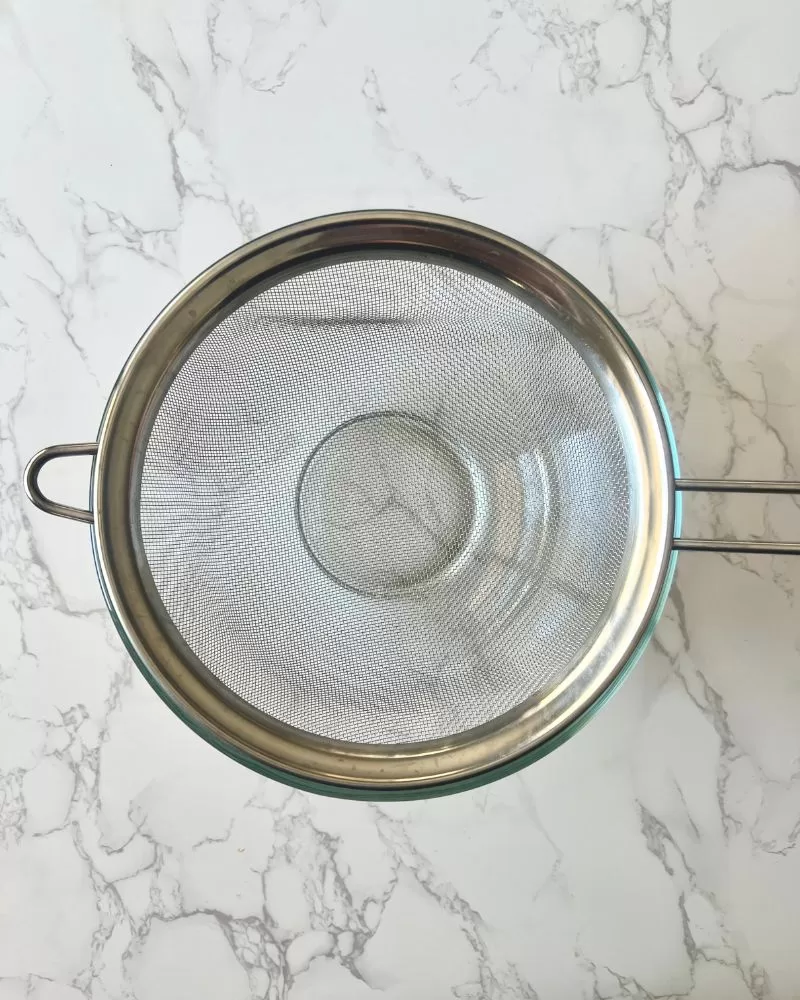
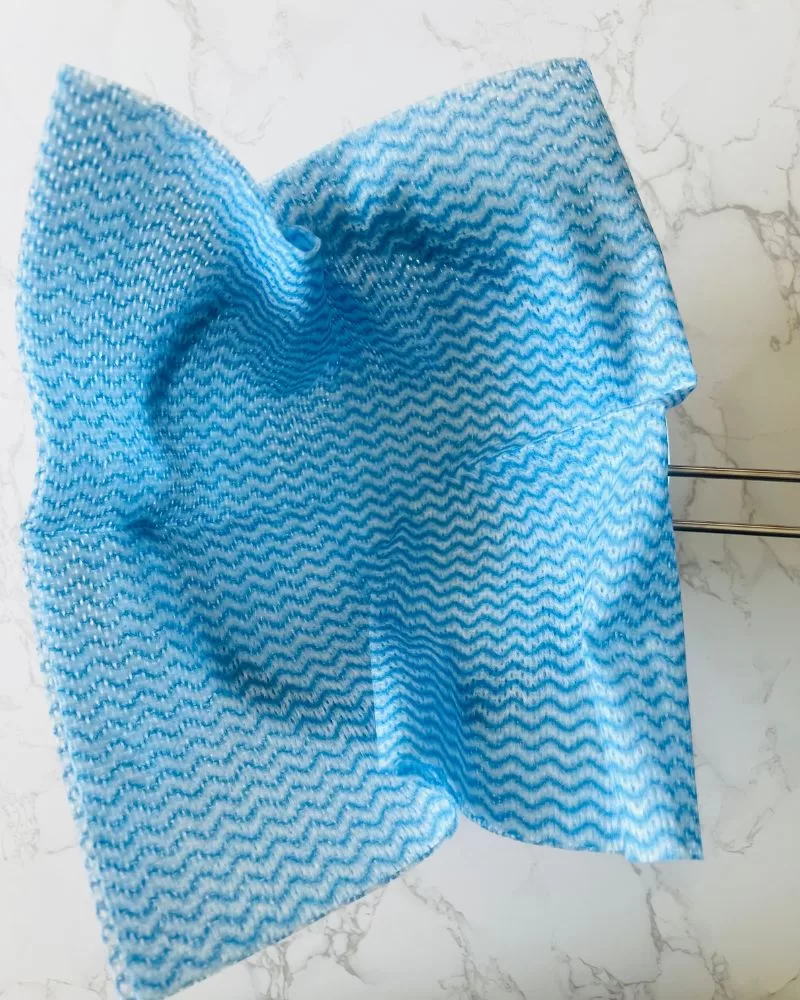
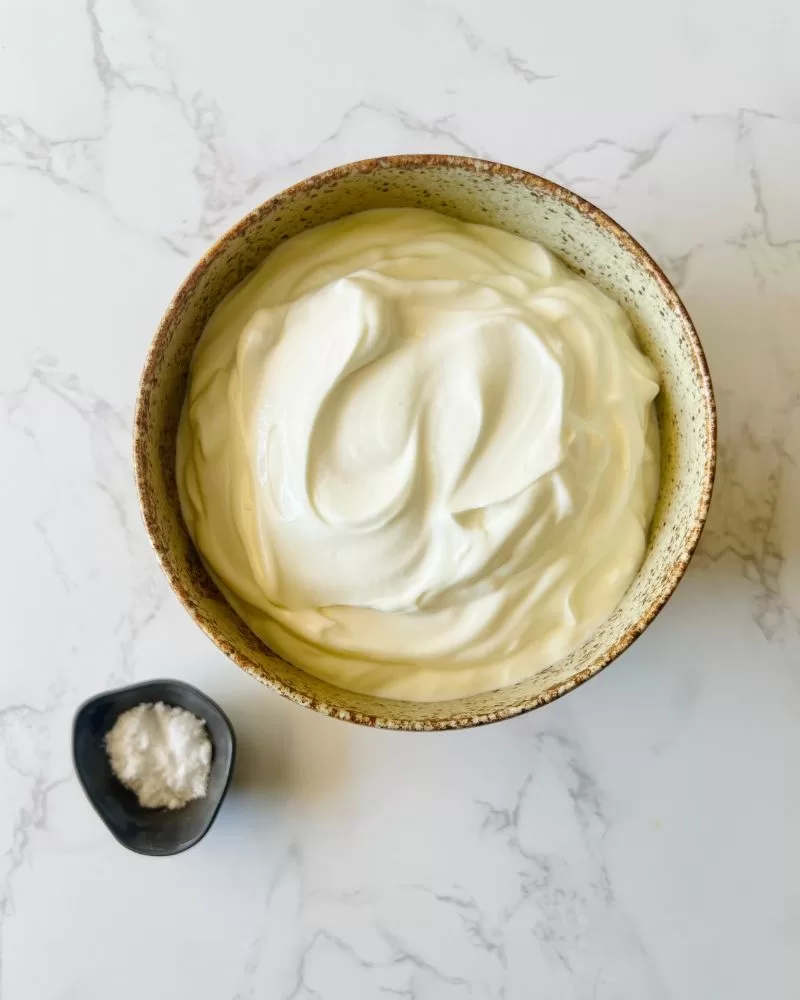
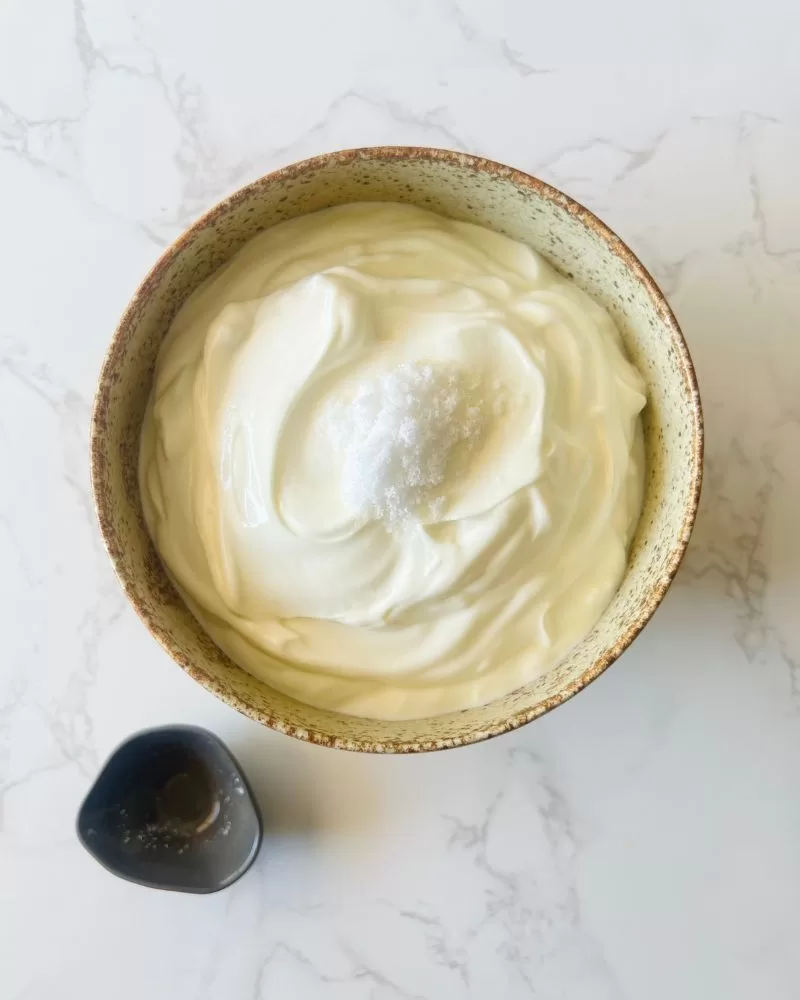

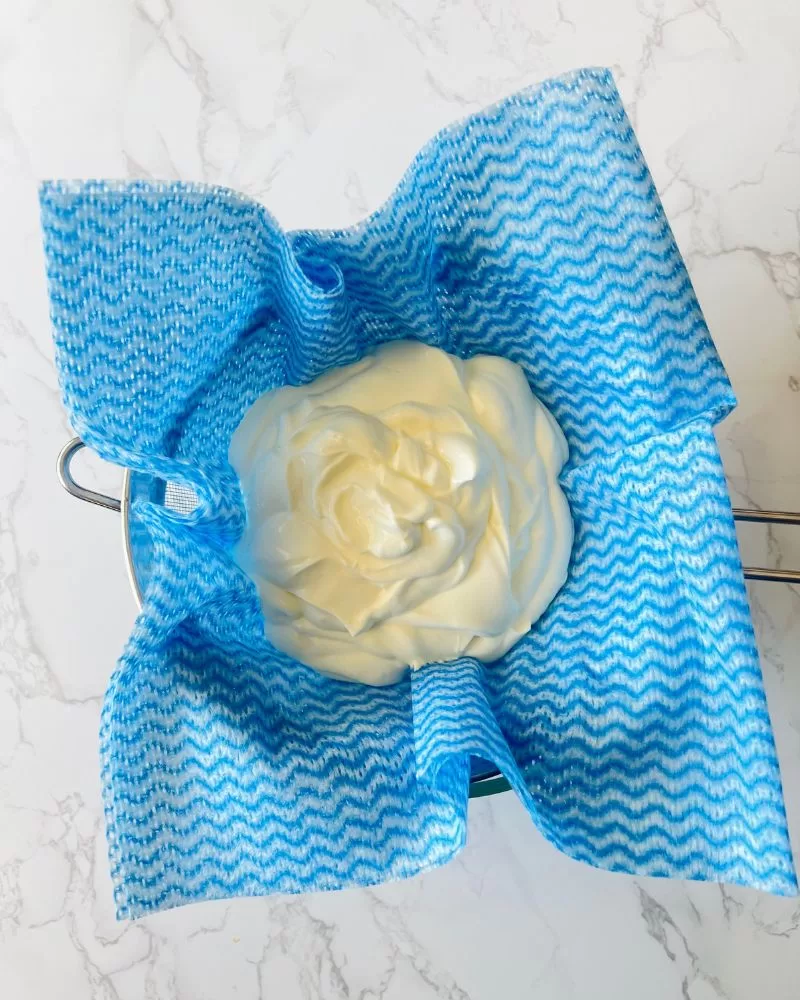
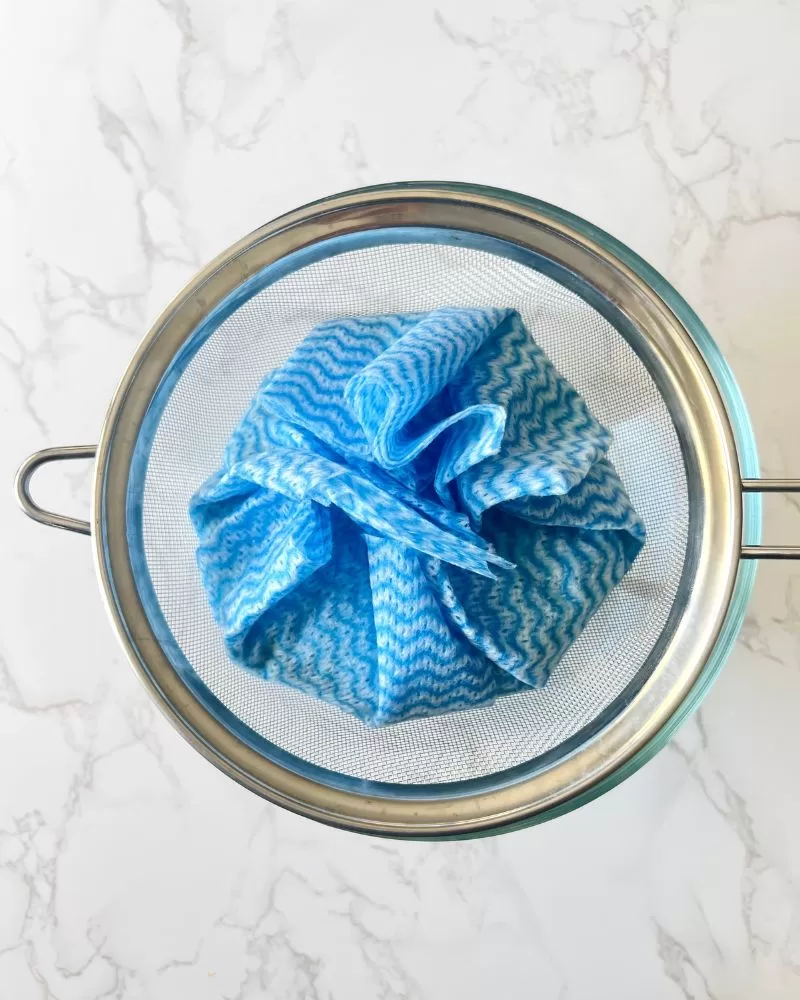
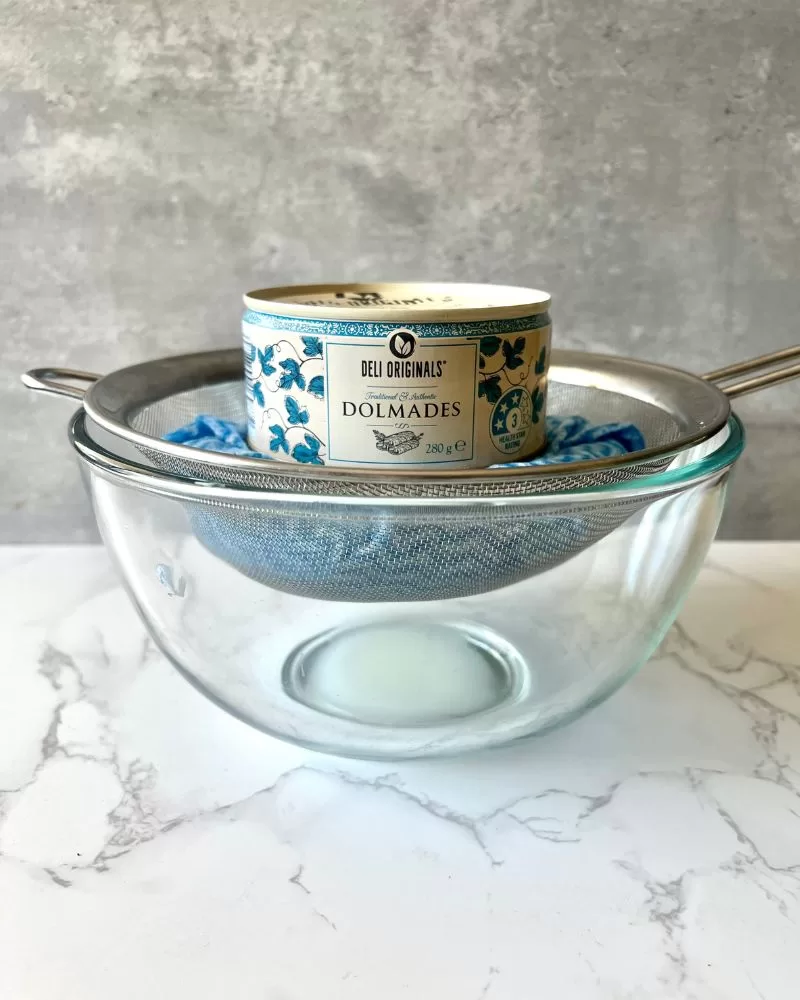
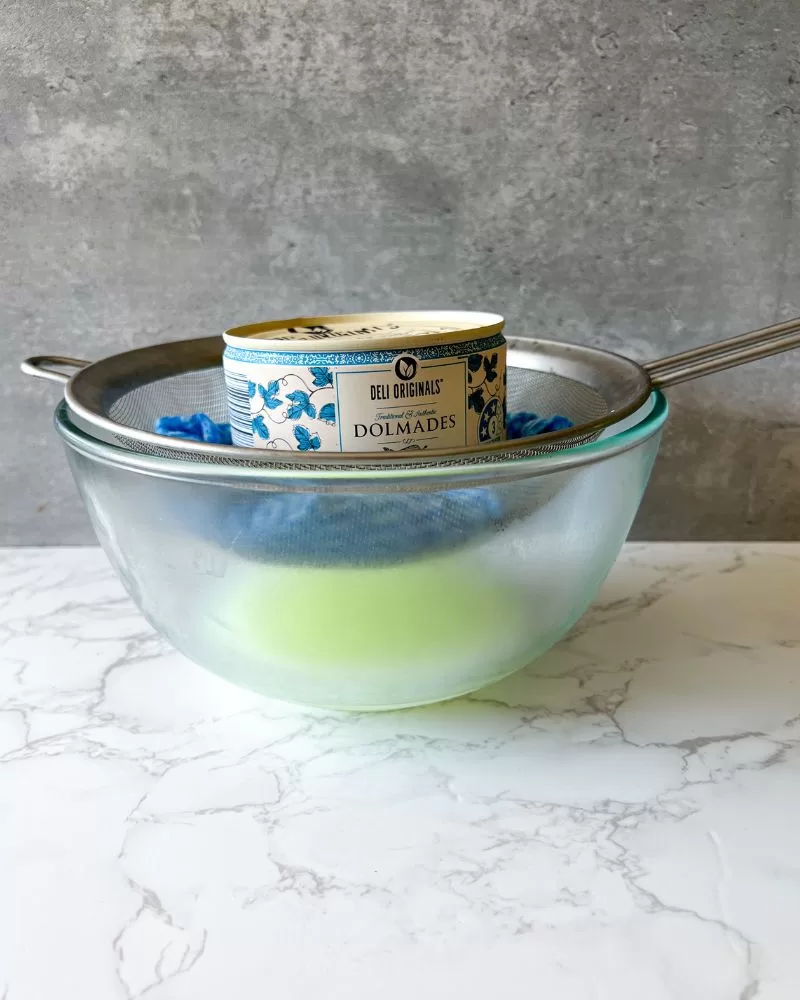
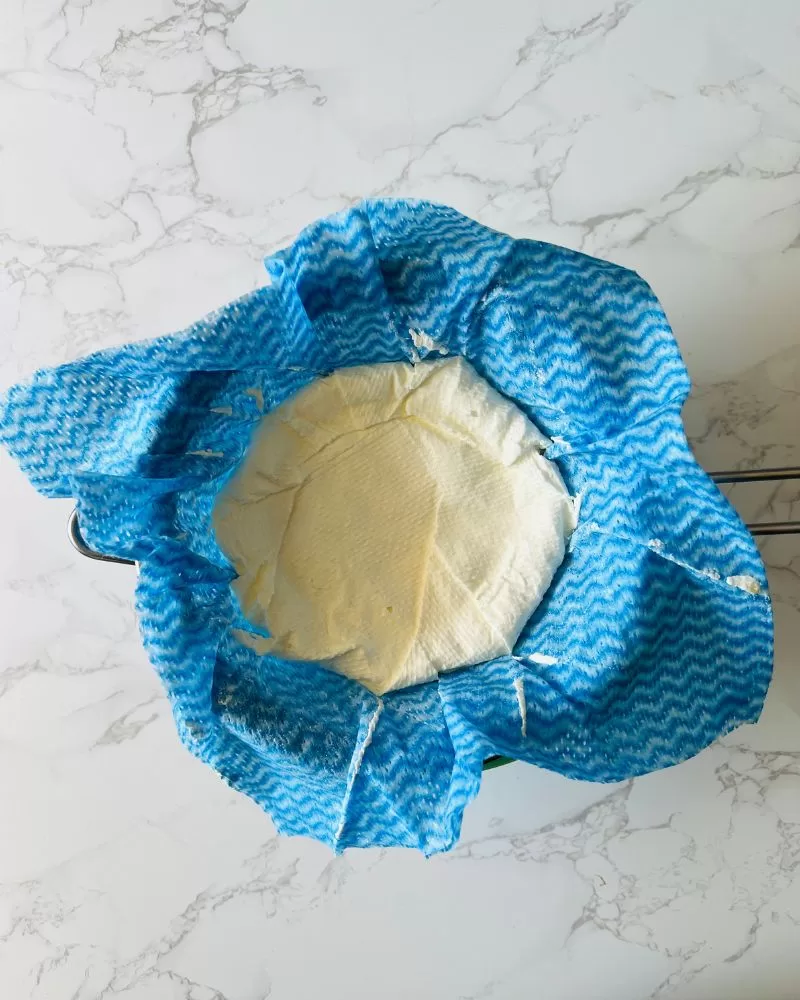
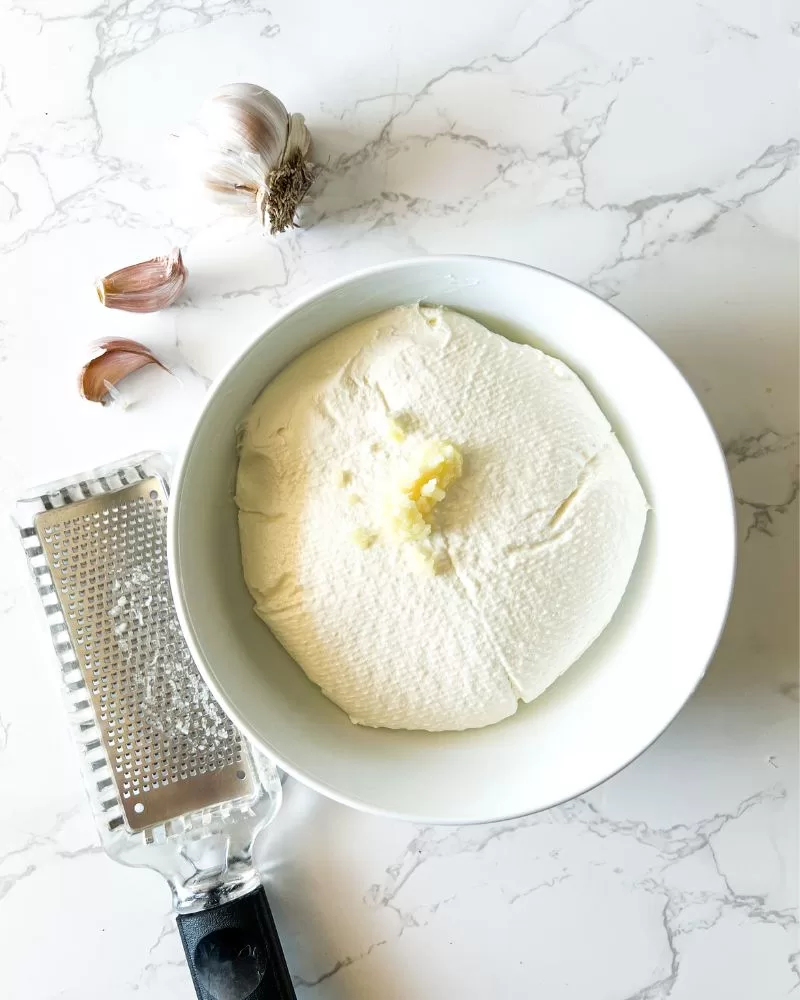
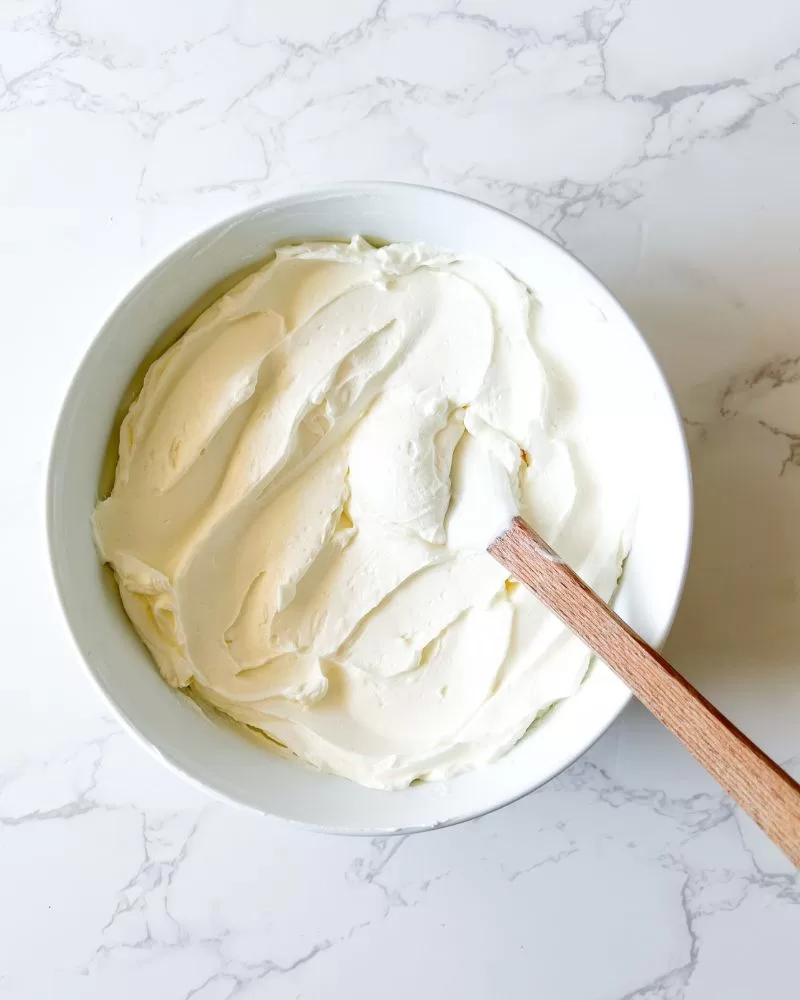
Labneh ~ optional toppings
Traditionally labneh is just yoghurt and salt. For this recipe I decided to give it a twist by adding garlic to give it a bite and topping za`atar and a selection of herbs. If you would prefer to make it the traditional way, here is a list of ideas instead to top with or not! It is perfectly beautiful on its own even without the garlic.
- Extra virgin olive oil
- Chilli oil
- Chilli Garlic Crisp Oil
- Dukkah or Za`atar
- Sumac
- Dried chilli flakes
- Nuts – hazelnuts, walnuts, pistachios, almonds, etc
- Olives – whole, sliced or diced
- Medley tomatoes and peelings of Lebanese cucumber
- Herbs – fresh dill, parsley, chives, thyme, mint, basil etc
- Roasted garlic
- Pesto swirled through
- Pomegranate seeds
- Roasted baby carrots in spices
- Toasted mixed seeds
- Pan fried chickpeas with spices
- Chilli honey and grilled figs, for a sweet version
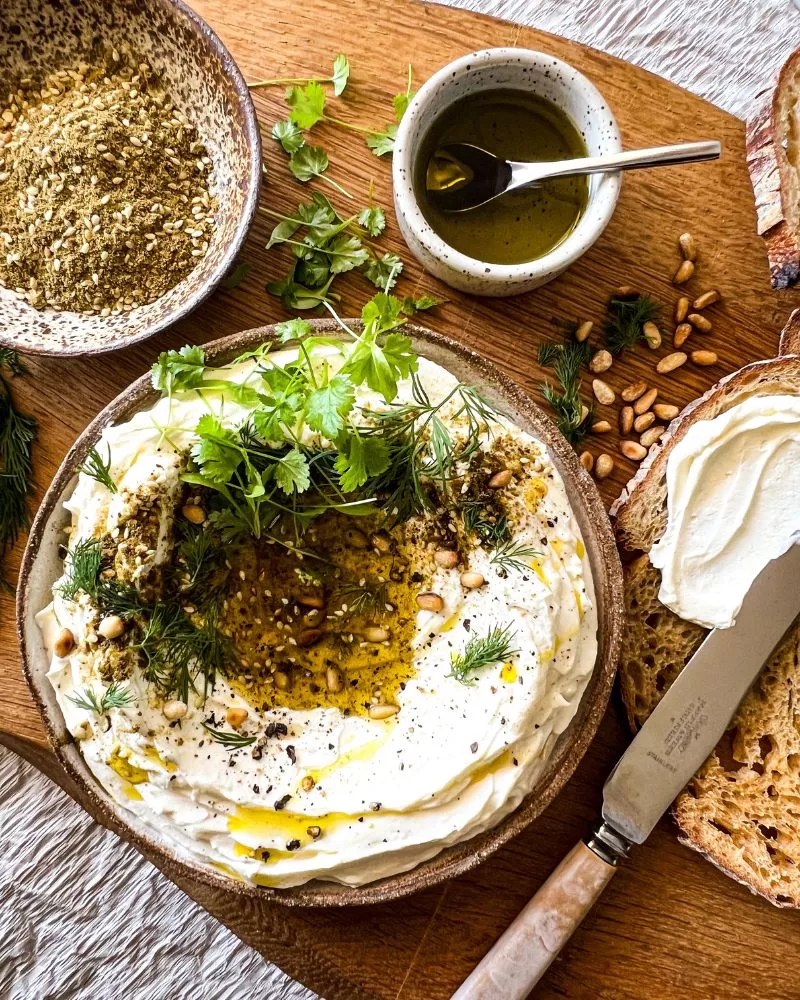
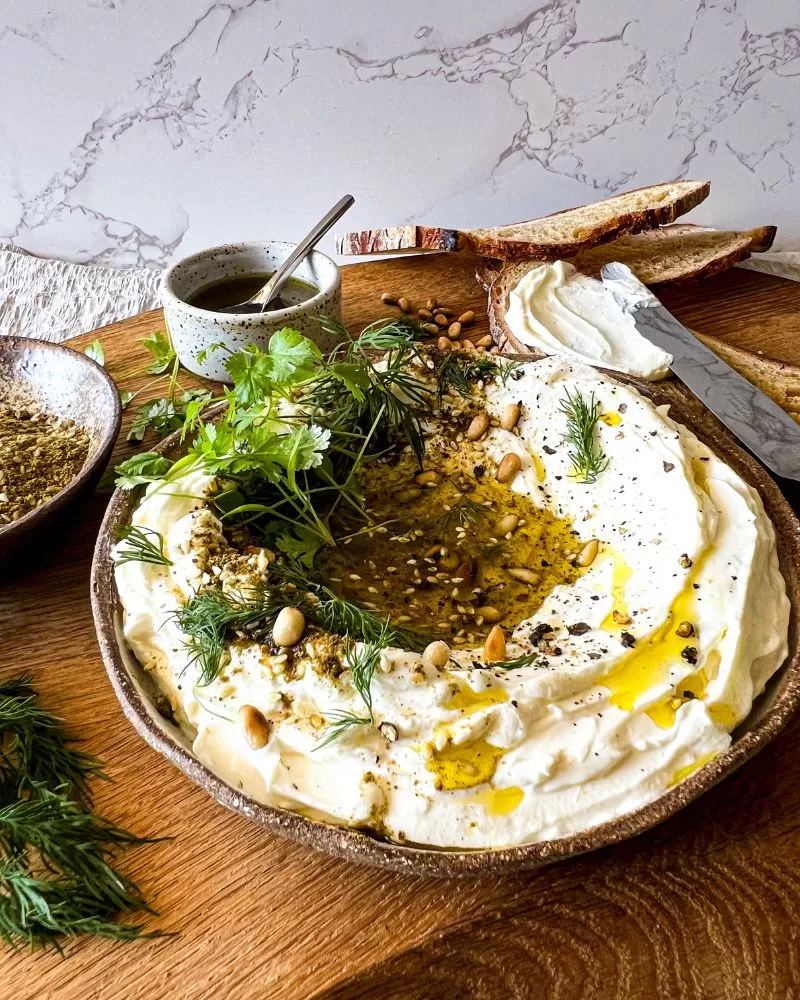
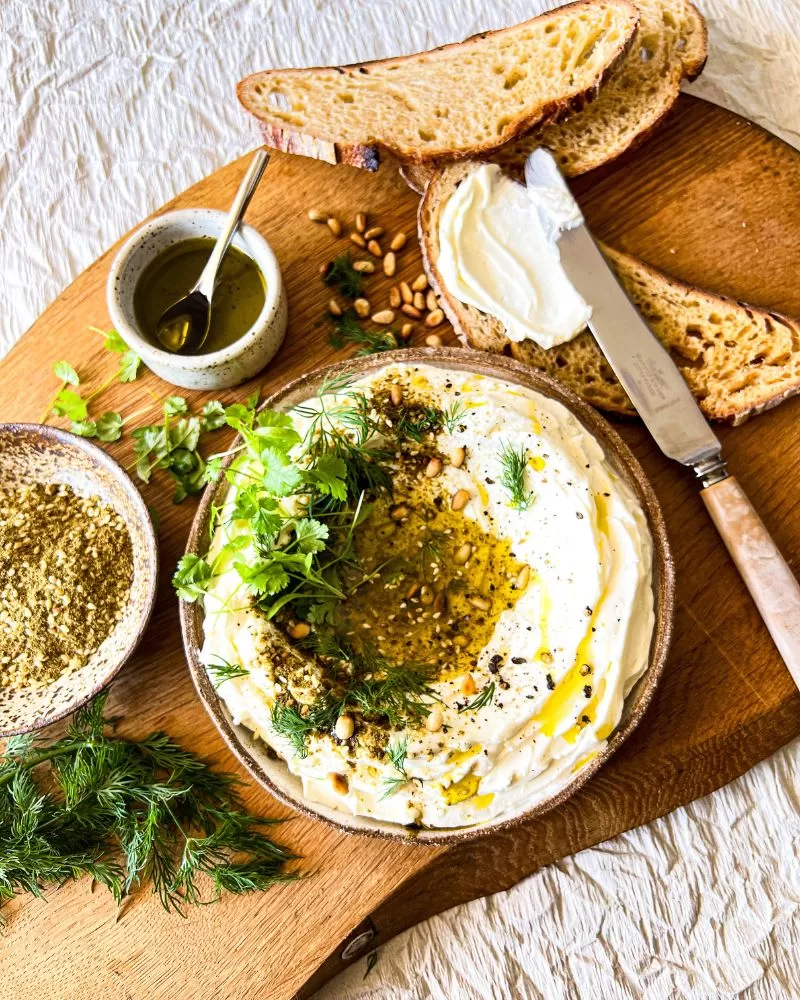
Labneh Serving suggestions
- Serve with fresh or toasted Lebanese bread, Pita Bread, thinly toasted sourdough bread or your favourite breads and crackers.
- Add to a mezze platter along with Hummus, vegetable crudités, dolmades, chorizo, marinated feta and chargrilled vegetables.
- As a side condiment to Middle Eastern spreads such as Falfels, Lebanese Rice, Lamb Kafta’s, Fattoush Salad and more!
- Use as a spread on sandwiches, wraps, burgers, bagels or crisp breads.
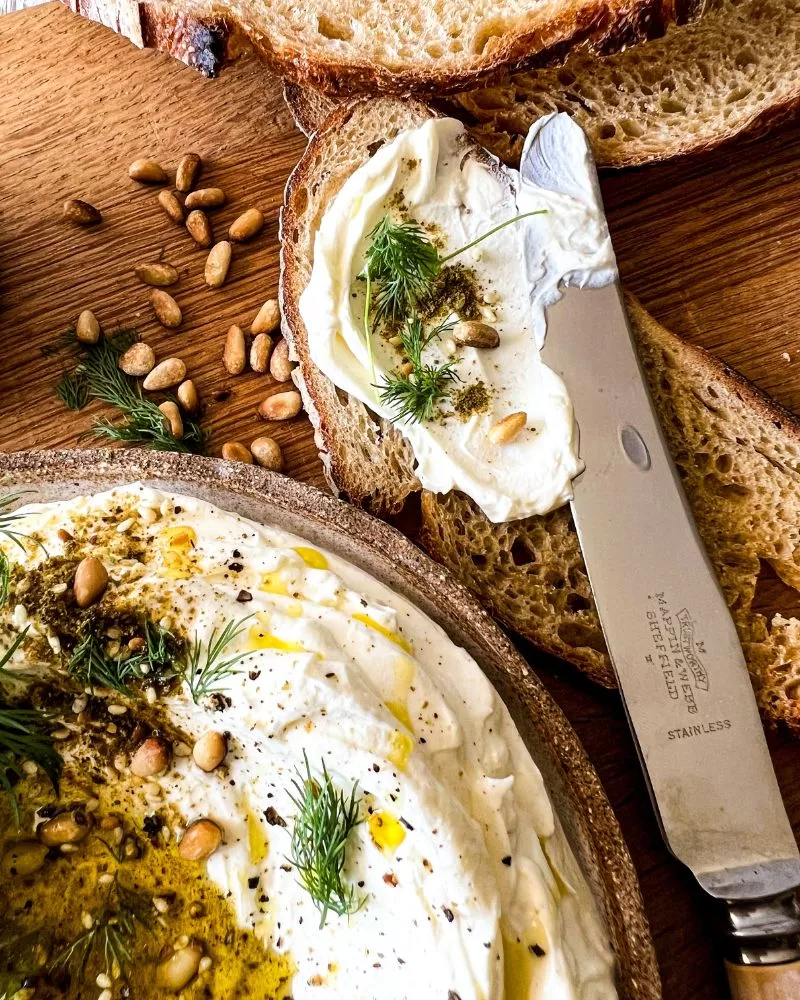
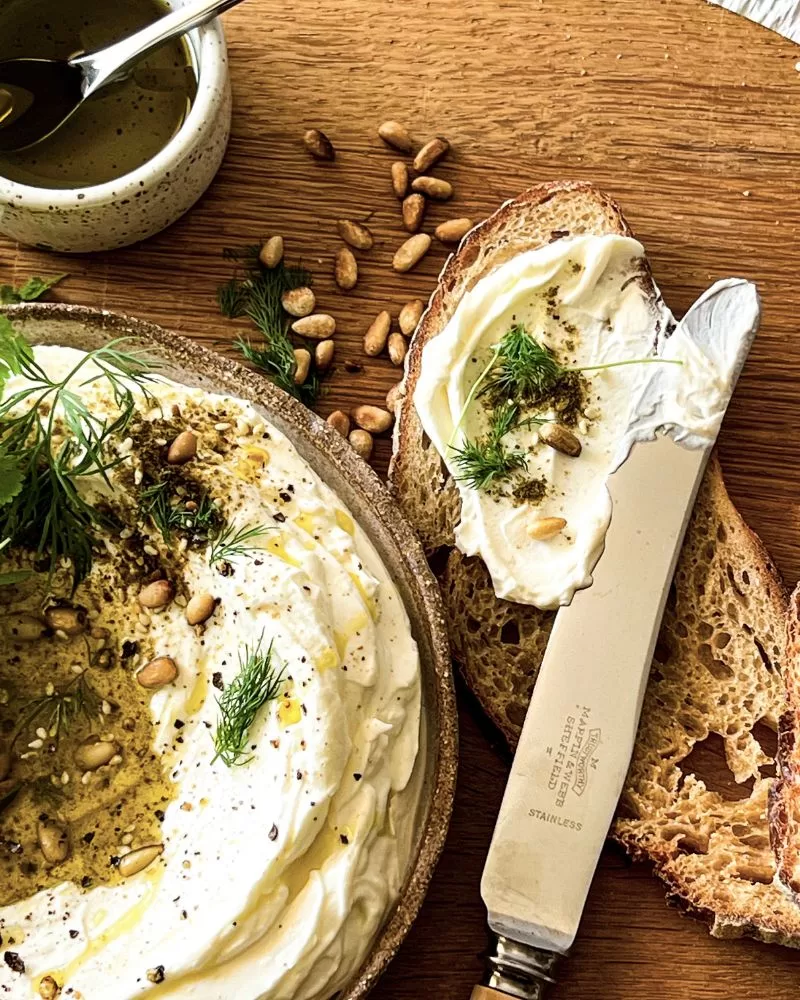
❄️ Storage
FRIDGE:
Labneh dip will keep in an airtight container in the fridge for up to 2-3 weeks. Rolled balls will keep for up to 1-2 months in the fridge if covered in oil.
FREEZE:
I don’t personally recommend freezing labneh but you can do if you wish. It is best to drain for 2-3 days to remove as much excess whey as possible then rolling into balls. Once rolled into balls, place into an airtight container, label, date and freeze for up to 6 months. Thaw in the fridge overnight before serving. Please note that it may alter the texture of the yoghurt.
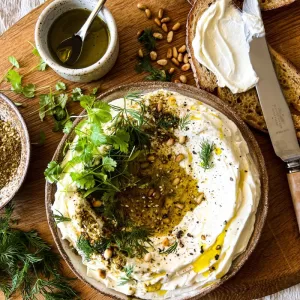
Garlic Labneh Dip with Za`atar, Pine Nuts & Herbs
Equipment
- Fine mesh strainer
- Muslin or clean chux cloth
- Large bowl
Ingredients
LABNEH DIP
- 500g thick Greek-style natural yoghurt
- ½ teaspoon salt
- 1 clove garlic, grated
TO GARNISH
- Extra virgin olive oil, to drizzle
- 2-3 teaspoons za`atar, for spinkling (See Note 2)
- 1 tablespoon pine nuts, toasted
- Fresh herbs, to garnish (I used dill and micro-green coriander)
TO SERVE – PICK ONE OR MORE
- Fresh Lebanese bread
- Pita bread
- Sourdough Crispies (See Note 3 – I used these)
- Crackers
Instructions
- Line a large sieve with muslin or a clean chux-style cloth and place over a large bowl. Place yoghurt into a bowl, add salt, and stir well to combine. Spoon the yoghurt mixture into the lined sieve. Fold over the muslin or chux to loosely cover. Place into the fridge overnight to drain.
- To make the dip, transfer the strained yoghurt to a medium bowl, discarding the whey in the large bowl (or keep for other uses). Add the grated garlic to the yoghurt and stir well. Pop it back into the fridge for 1 hour for the garlic to infuse.
- To serve the labneh, spoon into a shallow bowl or plate. Using the back of a spoon, make a well in the centre.
- Drizzle the labneh with olive oil and sprinkle with za`atar, pine nuts and extra fresh herbs. Season with cracked black pepper. Serve with Lebanese bread, pita and/or crackers along with any additional extras you desire (see Serving Suggestions in post above).
Notes
- COOKS NOTES:
Oven Temps: Oven temperatures are for conventional, if using fan-forced (convection), reduce the temperature by 20˚C.
Measurements: We use Australian tablespoons and cups: 1 teaspoon = 5 ml, 1 tablespoon = 20 ml & 1 cup = 250 ml.
Herbs: All herbs are fresh (unless specified) and cups are lightly packed.
Vegetables: All vegetables are medium size and peeled, unless specified.
Eggs: We use extra-large size and eggs are 55-60 g each, unless specified. - ZA`ATAR
Za’atar is a popular Middle Eastern spice blend made from dried herbs such as thyme, oregano, marjoram, and sometimes sumac, mixed with toasted sesame seeds and salt. This aromatic mixture is often used as a seasoning for breads, meats, vegetables, and dips, providing a tangy, earthy flavour with a hint of nuttiness from the sesame seeds. Za’atar is also mixed with olive oil to create a dip or spread for bread or as a seasoning for various dishes.
Za`atar can be purchased from gourmet grocers, online food and herb stores, Middle Eastern shops or you can make your own at home. Its very simple with some common pantry staples. Recipe coming soon to Feed Me Kate…
Sub with dukkah which can be purchased from local supermarkets in the herb section. - SOURDOUGH CRISPIES
These are one of my favourite snacks to make with leftover or stale sourdough bread. They store for weeks in an airtight container and are great for dips, soups, topping with canned tuna etc and just for nibbling on.
To make, slice sourdough bread as thin as you possibly can. Mine are usually around 3-4mm in thickness. Lay on a baking tray, without overlapping, and bake in a low 130C oven for around 15-20 minutes, flipping halfway through or until they are dried out and crisp. Allow to cool fully then store in an airtight jar or container at room temperature for up to 1 month or more!
You may also enjoy

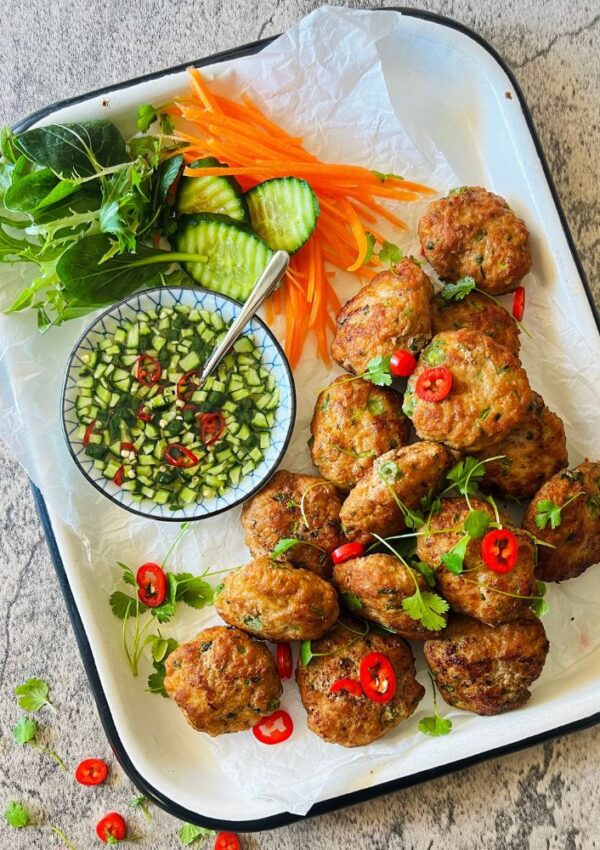
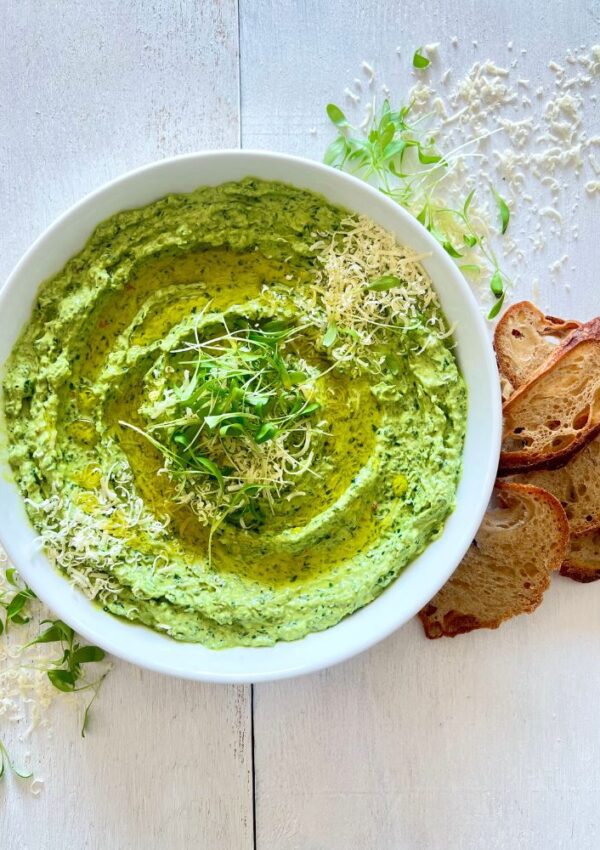
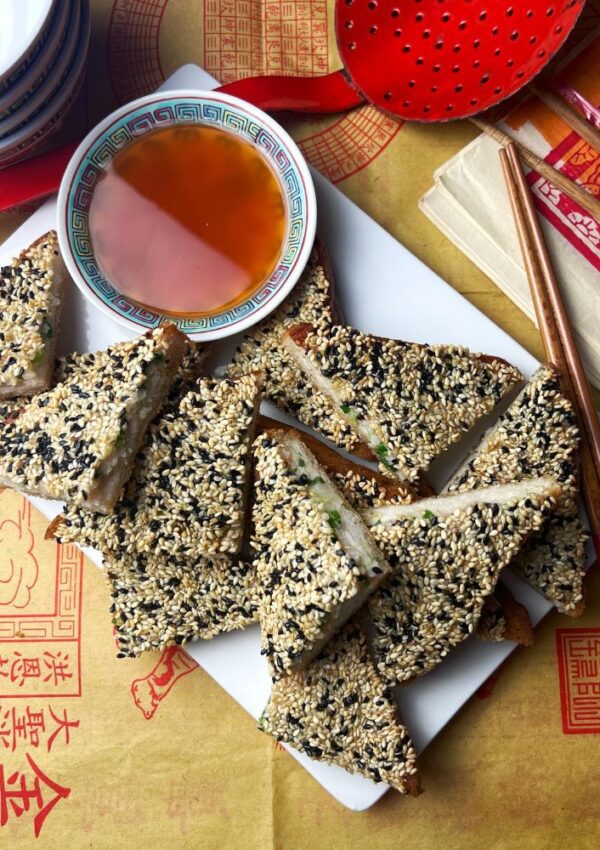


Leave a Reply